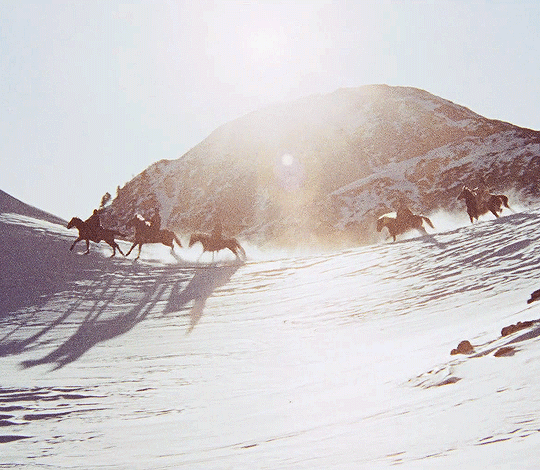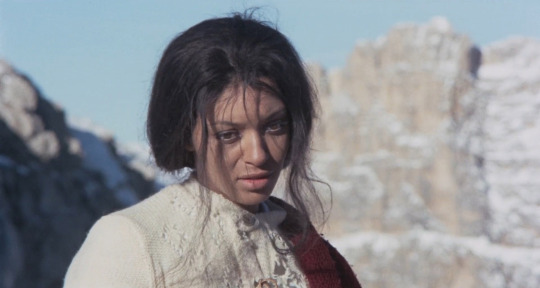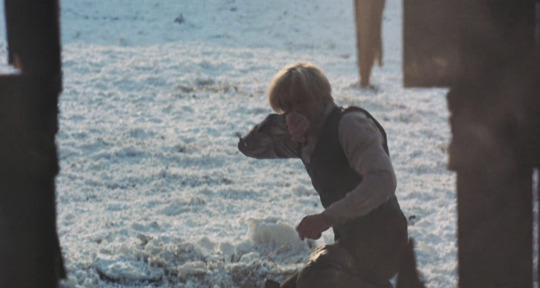#Grande Ile
Text







Men's boots can kick up the dust of this place for a thousand years, but nothing man can ever do will wipe out the blood stains of the poor folk who fell here.
The Great Silence (1968) dir. Sergio Corbucci
#filmedit#classicfilmedit#filmgifs#moviegifs#classicfilmblr#doyouevenfilm#dailyflicks#fyeahmovies#cinemapix#the great silence#il grande silenzio#ours#gifs#by ria#1960s
229 notes
·
View notes
Text

king of monaco
#f1#formula one#formula 1#f1 fanart#formula one fanart#formula 1 fanart#charles leclerc#cl16#ferrari#scuderia ferrari#charles leclerc fanart#monaco grand prix#monaco gp 2024#monaco24#monaco#home race#prince of monaco#il predestinato#red#art#artists on tumblr#artwork#drawing#my art#digital art#digital illustration#my fanart#fanart#leo leclerc#motosport
171 notes
·
View notes
Text

Foutage de gueule, AOP, affinage 7 ans
#french politics#BRAVO POUR CE 180° DIGNE DES PLUS GRANDS PATINEURS ARTISTIQUES#QUEL TALENT#il se fout de nous#upthebaguette
111 notes
·
View notes
Text

"Gatsby looked at Daisy
in a way that every
young girl
wanted to be looked at"
🤍.
#quotes#phrases#frasi#love#writing#self care#self love#poesia#poema#poetry#poetic#poem#emozioni#amore#books and reading#books#libri#lettura#letture consigliate#il grande Gatsby#the great gatsby#aforismi#black and white#fotografia#self portrait#selfie#girlhood#romantizing life#romanticismo#frasi amore
60 notes
·
View notes
Text













Il Grande Silenzio / The Great Silence (1968)
#the great silence#il grande silenzio#vonetta mcgee#jean louis trintignant#klaus kinski#sergio corbucci#1968#60s movies#1960s film#spaghetti western#western#drama#snow landscape#wild west#old west#horses#animals
109 notes
·
View notes
Text

Zora la vampira Vol.4 #51 - Il Grande Pube - Edifumetto. Italy, 1976.
Cover art by Alessandro Biffignandi?
#zora#zora la vampira#alessandro biffignandi#il grande pupe#horror art#horror comics#fumetti#italian comics
76 notes
·
View notes
Photo

The stone tower at Le Grand Jardin, Île Sainte-Marguerite, Cannes, France,
Sebastien Parmentelot Photography
#art#design#architecture#tower#le grand jardin#cannes#france#ile sainte-marguerite#luxury house#luxury home#luxurylifestyle#style#history#landscaping#gardens#sebastien parmentelot
450 notes
·
View notes
Text
le più alte e ignoranti cariche di questo merda di stato che si accaniscono di brutto contro Imane Khelif sono le stesse che quando viene ammazzata una ragazza, una donna, una bambina si fanno i cazzi loro e manco lo aprono X.
#il mio più grande sogno e sperare che salgano tutti insieme su un unico aereo e che l'aereo si schianti#fanno venire il vomito
31 notes
·
View notes
Text
Charles Leclerc is the winner of the 2024 Monaco Grand Prix ❤️🩹🇲🇨
#charles leclerc 16#charles leclerc f1#charlesleclercedit#charles leclerc#cl16#formula 1 edit#ferrari formula one#formula uno#formula 1#essere ferrari#ferrari#scuderia ferrari#monaco 2024 saturday#monaco grand prix#monaco gp 2024#prince of monaco#il predestinato#tiktok#tiktok edits#carlos sainz edit#carlos sainz f1#carlos sainz junior#carlos sainz#oscar piastri#lewis hamilton edit#lewis hamilton
38 notes
·
View notes
Text
Piccolo disclaimer.
Dovrei fissare in alto anche questo 🙄
Se esordite in chat con un "mi sto segando", non vi meravigliate se:
a) non suscitate in me immediato interesse a partecipare alla vostra sega e
b) non riuscite a farmi eccitare con un "ti succhierei la fica" e un "ti scoperei col cazzo nella fica e due dita in culo".
Va che vi rimando tutti a Settembre a rivedere "Il grande Lebowski"
72 notes
·
View notes
Text

Charles Leclerc vince il Gran Premio di Monaco per la prima volta in carriera
#art#artists on tumblr#artwork#drawing#my art#digital art#aesthetic#digital illustration#my fanart#fanart#f1 fanart#f1#formula one fanart#formula one#formula 1#formula 1 fanart#ferrari#scuderia ferrari#forza ferrari#forza ferrari sempre#charles leclerc fanart#charles leclerc#cl16#forza charles sempre#charles leclerc wins the monaco grand prix#monaco gp 2024#monaco24#prince of monaco#monaco grand prix#il predestinato
75 notes
·
View notes
Text
Charles @ mclaren this race weekend:




#f1#formula 1#formula one#charles leclerc#singapore grand prix#singapore gp 2024#anti mclaren#our lord and savior#il predestinato
23 notes
·
View notes
Text
@dumbhusky l'ha trovato alla fermata del bus

#GRANDE CHARLES CAZZO🔥🔥🔥#grazie per questi consigli inestimabili Charlie🙏🙏🙏🙏#sta cosa mi fa morire perchè tipo due giorni ga ho visto il video di Charles che colpiva una macchina con la sua a Monaco se non sbaglio#e non so se è un falso mito che sia una pippa a parcheggiare#MA VA BENE ALMENO METTE LA CINTURA DI SICUREZZA!!!!! FORZA FERRARI SEMPRE!!!!!!#charles leclerc#cl16#ferrari#f1#formula 1#'il mio consiglio per la sicurezza' Charles la sicurezza l'hai mandata a fanculo a Monza#con quelle ruote tenute cosí tanto che se per sbaglio ci finiva un granello di ghiaia esplodevano#ma va bene lo stesso!!!!!! forza ferrari!!!!!
21 notes
·
View notes
Text

Sapin de Noël dans le Grand Salon du Château de Vaux-le-Vicomte, Maincy, Île-de-France, FRANCE
#sapin de noël#christmas tree#arbol de navidad#grand salon#gran salon#château#castle#castillo#vaux-le-vicomte#maincy#seine et marne#ile de france#france#francia#europe#europa
144 notes
·
View notes
Text

f1 Grande Charles 👏🇮🇹
#formula 1#formula one#formula racing#motor racing#f1#ferrari#charles leclerc#charles lechair#charles lecrelc#king of monza#monza grand prix#monza gp 2024#charlesleclerc16#charles leclerc 16#charles leclerc instagram#prince of monaco#price of monza#il predestinato
23 notes
·
View notes
Text


From Frédéric Poulsen, "Le buste du bronze de Cato trouvé à Volubilis", in the journal of the Académie des inscriptions et belles-lettres, 1947:
"The first thing which surprises [the viewer] about this admirably preserved bust is how clearly it has retained a certain rustic trace. This is a true country man, like to the wealthy farmers of the agricultural nations of our day. Cato, however, belonged to the stifling circle of the high Roman nobility (which fact is demonstrated above all by the marriages of his sisters and daughter). Here, he appears as the descendant of Cato Priscus, that prototype of the great Roman country man—and the urban life of multiple generations of that family, three of whose representatives held the consulship, has not erased this spirit.
The second great impression [one has] of this visage is the seriousness of its features, in perfect accord with the literary tradition: "It was difficult," Plutarch says (Plut. Cat. Min. 1-2), "to move Cato to laughter, and rare that a smile should appear on his face". He was harsh, tenacious, and, when ill, demonstrated an admirable forbearance.
Adding to the serious expression of those features is the movement of the head: it is turned toward the left shoulder and, at the same time, gently, peacefully inclined; and the movement which tenses the neck muscles, combined with the lines of the mouth, creates an impression of severity, even of unavailability. It is not impossible that the absence of colored stones, which would have once indicated the iris and pupils, contributes to the hardness of the gaze.
At the time of his death, Cato was forty-eight years old, but this portrait speaks of a man who lived a hard life and was aged prematurely by it. It is true that [one contemporary scholar] finds the Cato of this bust younger than the age of his death—an impression probably due to his observation of the bust's profile, since from that angle the expression is both younger and more peaceful, as if disclosing traces of the features of a young man; it is only by virtue of the large nose, particularly its curve, that a powerful masculine energy is revealed and even emphasized.
But, seen from the front, the face is haggard, the forehead is crossed by deep wrinkles that run parallel to the thick eyebrows, the creases that run down from the lower eyelids, the large and profound furrows of the cheeks, and the great lines between the mouth and chin, all contribute to give the face an expression of pain and age. In my opinion he could well have been a sexagenarian, this great country man with his proud, tranquil expression.
[...]
Even if the portrait from Volubilis dates from as late as ±150 years after Cato's death [the author dates the bust about the time of Domitian or Trajan, ed.], it goes without saying that an older and more contemporary portrait has been copied. This is confirmed when one observes the profile of the bust once more: one sees the tufts of hair in the nape of the neck shaped like long, curved leaves, and stylized in a bladelike form, a mode of stylization characteristic of precisely the period in which Cato lived, ±50 BCE.
[...]
Naturally we might suppose that a certain alteration of the features must have taken place in this transmission from copyist to copyist. [...] Where an artist, from the time of Nero for example, has copied a republican portrait meant for the atrium of a young, newlywed nobleman [an ancestral imago], the result is inevitably a mixture of styles, a circumstance which makes it still more difficult to date many Roman portraits.
Certain points of resemblance, then, may have been diminished in the face of the Volubilis Cato—on the other hand, the artistic effect could have been strengthened by an emphasis on the essential lines and forms of the visage. Happily, the artist appears to have stuck to the veracity of the original, without adding any suggestions of that saintliness or divine inspiration which the writers of the imperial era attribute to Cato, from Seneca to Plutarch."
#cato minor#c#il pourrait être sexagénaire — ce grand paysan à l'expression tranquille et fière. ;;_;;#good to stretch my french a little. also really funny how whipped mr. poulsen obviously is. another one bites the dust
23 notes
·
View notes